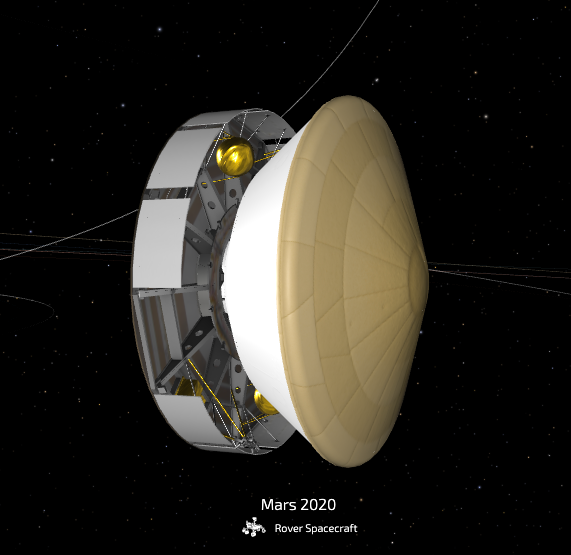


Mark your calendars: The agency's latest rover has only about 8,640,000 seconds to go before it touches down on the Red Planet, becoming history's next Mars car.
A mere 100 days and 166 million miles (268 million kilometers) separate NASA's Mars 2020 mission and the Red Planet's Jezero Crater. Landing will occur on Feb. 18, 2021, at 12:43 p.m. PST (3:43 p.m. EST), with confirmation being received back at NASA's Jet Propulsion Laboratory in Southern California about 11 1/2 minutes later.
The six-wheeled Mars car is tasked with prowling the crater – believed to be the site of a Martian lake billions of years ago – to search for signs of ancient microbial life, collect and cache Martian rock and regolith (broken rock and dust), and pave the way for human exploration of the Red Planet.
"While we call the six-and-a-half-month trip from Earth to Mars 'cruise,' I assure you there is not much croquet going on at the lido deck," said Project Manager John McNamee of JPL. "Between checking out the spacecraft, and planning and simulating our landing and surface operations, the entire team is on the clock, working toward our exploration of Jezero Crater."
On Nov. 9, the mission team confirmed that the propulsion subsystem of the descent stage, which will help lower the rover onto Mars, is in good working order. Today, Nov. 10, they turn their attention to the rover's PIXL and SHERLOC instruments. The Lander Vision System is scheduled to go under the microscope on Nov. 11; and the SuperCam instrument, the day after that. Down the road, on Dec. 18, the team plans to perform a trajectory correction maneuver, using the cruise stage's eight thrusters to refine the spacecraft's path toward Mars.
Another important mission milestone will be rehearsed starting next Monday, Nov. 16, when the team begins a five-day simulation of surface operations – including driving the rover and conducting a sampling. In December, the team is expecting a gremlin or two to make an appearance during another five-day simulation of the rover's transition from landing to surface operations.
More About the Mission
A key objective of Perseverance's mission on Mars is astrobiology, including the search for signs of ancient microbial life. The rover will characterize the planet's geology and past climate, pave the way for human exploration of the Red Planet, and be the first mission to collect and cache Martian rock and regolith (broken rock and dust).
Subsequent missions, currently under consideration by NASA in cooperation with ESA (European Space Agency), would send spacecraft to Mars to collect these cached samples from the surface and return them to Earth for in-depth analysis.
The Mars 2020 mission is part of a larger program that includes missions to the Moon as a way to prepare for human exploration of the Red Planet. Charged with returning astronauts to the Moon by 2024, NASA will establish a sustained human presence on and around the Moon by 2028 through NASA's Artemis lunar exploration plans.
JPL, which is managed for NASA by Caltech in Pasadena, California, built and manages operations of the Perseverance rover.
For more about Perseverance visit: